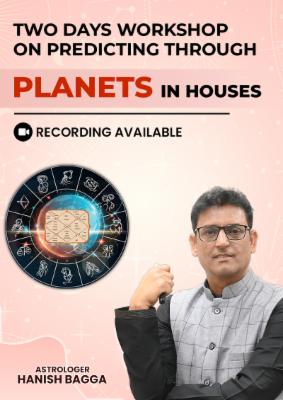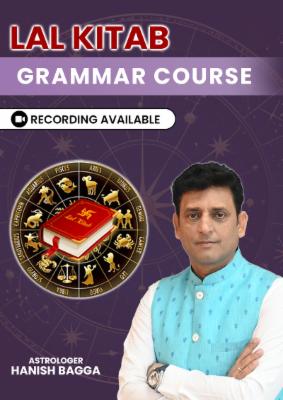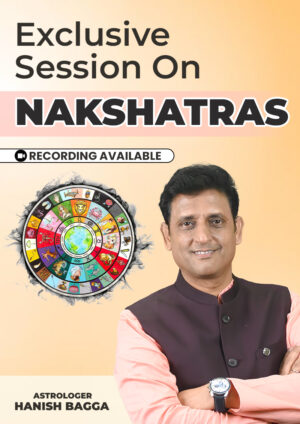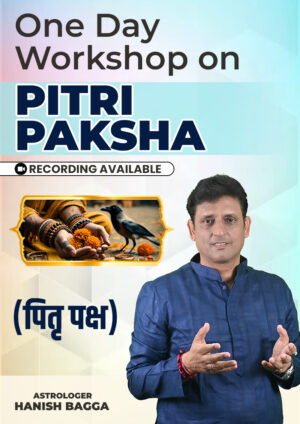- Introduction to Neel Saraswati Stotram
- The Origin and Significance of Neel Saraswati Stotram
- Structure and Content of the Neel Saraswati Stotram
- The Power and Benefits of Reciting Neel Saraswati Stotram
- How to Recite the Neel Saraswati Stotram
- Integrating Neel Saraswati Stotram into Daily Life
- Common Misconceptions about Neel Saraswati Stotram
- Neel Saraswati Stotram in Modern Context
- Learning Resources for Neel Saraswati Stotram
- Conclusion
Introduction to Neel Saraswati Stotram
The Neel Saraswati Stotram is a powerful and revered hymn in Hindu tradition, dedicated to Goddess Saraswati, the divine embodiment of knowledge, wisdom, and the arts. This ancient Sanskrit prayer holds a special place in the hearts of devotees, students, and seekers of knowledge. In this comprehensive guide, we’ll delve deep into the origins, significance, and various aspects of the Neel Saraswati Stotram, exploring its profound impact on those who recite it with devotion.
The Origin and Significance of Neel Saraswati Stotram
Understanding Goddess Saraswati
Goddess Saraswati is one of the most important deities in the Hindu pantheon. She is revered as the goddess of knowledge, wisdom, music, arts, and learning. Her name itself is derived from the Sanskrit word “saras,” meaning “flowing,” and “wati,” meaning “she who possesses.” Thus, Saraswati is often associated with the flow of knowledge and creativity.
The Concept of “Neel” Saraswati
The term “Neel” in Neel Saraswati refers to the blue color associated with this particular form of the goddess. In Hindu iconography, colors often carry deep symbolic meanings. The blue color is typically associated with infinity, depth, and vastness, much like the endless expanse of the sky or the ocean. This blue hue represents the boundless nature of knowledge and wisdom that Goddess Saraswati embodies.
Historical Context of the Stotram
The Neel Saraswati Stotram is believed to have been composed centuries ago, though its exact origin is difficult to pinpoint. It is part of the rich tradition of Sanskrit stotra literature, which consists of hymns and prayers dedicated to various deities. These stotrams are not just religious texts but also serve as beautiful examples of Sanskrit poetry, showcasing the linguistic and artistic prowess of ancient Indian scholars.
Structure and Content of the Neel Saraswati Stotram
Verses and Their Meanings
The Neel Saraswati Stotram typically consists of several verses, each praising different aspects of the goddess. Let’s look at a few key verses and their meanings:
- The opening verse often begins with a salutation to the goddess, describing her divine form and attributes.
- Subsequent verses may focus on her role as the bestower of knowledge and wisdom, asking for her blessings in removing ignorance and confusion.
- Some verses describe her physical appearance, often mentioning her four arms holding various symbolic items like a book, a rosary, a musical instrument (veena), and a pot of water.
- The stotram may also include references to her vehicle, the swan, which symbolizes the ability to discern truth from falsehood.
Symbolism in the Stotram
The Neel Saraswati Stotram is rich in symbolism, each element carrying deep meaning:
- The blue color: Represents the infinite nature of knowledge
- The swan: Symbolizes purity and discernment
- The veena: Represents the harmony of learning and the arts
- The book: Signifies all forms of knowledge
- The rosary: Symbolizes concentration and meditation
- The pot of water: Represents the purifying nature of true wisdom
The Power and Benefits of Reciting Neel Saraswati Stotram
Spiritual Benefits
Reciting the Neel Saraswati Stotram is believed to bring numerous spiritual benefits:
- Enhanced spiritual awareness and connection with the divine
- Purification of the mind and thoughts
- Development of devotion and faith
- Increased clarity in spiritual practices
Intellectual and Academic Benefits
Many devotees and students recite this stotram for its perceived benefits in academic and intellectual pursuits:
- Improved concentration and focus
- Enhanced memory and retention of knowledge
- Increased creativity and problem-solving abilities
- Better articulation and communication skills
Emotional and Psychological Benefits
Regular recitation of the Neel Saraswati Stotram is also associated with emotional and psychological benefits:
- Reduced stress and anxiety, especially related to studies or creative work
- Increased self-confidence and self-esteem
- Better emotional balance and clarity of thought
- Enhanced ability to handle academic or work-related pressures
How to Recite the Neel Saraswati Stotram
Proper Pronunciation and Intonation
To fully harness the power of the stotram, it’s important to recite it correctly:
- Learn the correct Sanskrit pronunciation of each word
- Pay attention to the rhythm and meter of the verses
- Practice regularly to improve fluency and intonation
Recommended Times and Occasions for Recitation
While the stotram can be recited at any time, certain times are considered particularly auspicious:
- Early morning, during the Brahma Muhurta (about 1.5 hours before sunrise)
- Before beginning your studies or any important intellectual task
- During Saraswati Puja or Vasant Panchami festival
- On Wednesdays, which are traditionally associated with Goddess Saraswati
Creating a Conducive Environment
To enhance the experience of reciting the Neel Saraswati Stotram:
- Choose a quiet, clean space for recitation
- Light a lamp or incense if desired
- Sit in a comfortable posture, preferably facing east
- Begin with a few moments of quiet meditation to center yourself
Integrating Neel Saraswati Stotram into Daily Life
For Students and Academics
Students can incorporate the stotram into their daily routine:
- Recite it before starting study sessions
- Use it as a focusing tool during breaks
- Include it in morning or evening prayer routines
For Artists and Creative Professionals
Artists and creative professionals can use the stotram to invoke inspiration:
- Recite before beginning creative work
- Use it as a meditation to overcome creative blocks
- Incorporate its themes into artistic works
For Spiritual Seekers
Spiritual practitioners can use the Neel Saraswati Stotram to deepen their practice:
- Include it in daily sadhana or spiritual routine
- Use it as a focus for meditation on divine wisdom
- Study its meaning and symbolism for deeper spiritual insights
Common Misconceptions about Neel Saraswati Stotram
It’s Only for Hindus
While the stotram originates from Hindu tradition, its universal themes of knowledge and wisdom make it accessible to anyone interested in personal growth and learning.
It’s a Magical Solution for Academic Success
The stotram is a tool for focus and inspiration, not a substitute for hard work and dedication in studies or creative pursuits.
It Requires Perfect Sanskrit Pronunciation
While correct pronunciation is ideal, the sincerity and devotion behind the recitation are equally important.
Neel Saraswati Stotram in Modern Context
Relevance in the Digital Age
In our information-saturated world, the Neel Saraswati Stotram remains relevant:
- As a tool for mental clarity and focus amidst digital distractions
- For invoking creativity in new forms of digital art and media
- As a reminder of the importance of wisdom in using and creating technology
Scientific Perspectives on Mantra Recitation
Recent scientific studies have explored the effects of mantra recitation:
- Potential benefits for stress reduction and mental health
- Effects on brain activity and cognitive function
- Possible impacts on focus and concentration
Learning Resources for Neel Saraswati Stotram
Books and Texts
Several books offer in-depth analysis and commentary on the Neel Saraswati Stotram, providing valuable insights into its meaning and significance.
Online Resources
Numerous websites and YouTube channels offer audio recordings, translations, and explanations of the stotram, making it accessible to a global audience.
Learning from Gurus and Scholars
For those seeking a deeper understanding, learning from experienced gurus or Sanskrit scholars can provide invaluable insights and correct guidance in pronunciation and interpretation.
Conclusion
The Neel Saraswati Stotram is more than just a prayer or a hymn; it’s a profound tool for personal growth, spiritual development, and intellectual enhancement. Its timeless wisdom continues to inspire and guide people from all walks of life, transcending cultural and religious boundaries. Whether you’re a student seeking academic excellence, an artist looking for creative inspiration, or a spiritual seeker on the path of wisdom, the Neel Saraswati Stotram offers a wealth of benefits and insights.
By understanding its origins, significance, and proper methods of recitation, you can harness the full potential of this powerful stotram. As you incorporate it into your daily life, you may find yourself experiencing enhanced clarity, creativity, and spiritual connection. Remember, the true power of the Neel Saraswati Stotram lies not just in its words, but in the devotion and sincerity with which it is recited and internalized.
FAQs about Neel Saraswati Stotram
1. What is the best time to recite the Neel Saraswati Stotram?
While the stotram can be recited at any time, early morning during the Brahma Muhurta (about 1.5 hours before sunrise) is considered most auspicious. However, consistency is more important than timing, so choose a time that you can maintain regularly.
2. Do I need to understand Sanskrit to benefit from the stotram?
Understanding Sanskrit can enhance your experience, but it’s not necessary. The vibrations and devotion in recitation are believed to be beneficial even if you don’t understand every word. However, learning the meaning can deepen your connection to the stotram.
3. How long does it take to see results from reciting the Neel Saraswati Stotram?
The effects of reciting the stotram can vary from person to person. Some people report feeling immediate calmness or clarity, while for others, the benefits may accumulate over time with regular practice. Patience and consistency are key.
4. Can children recite the Neel Saraswati Stotram?
Absolutely! Many parents and teachers encourage children to recite the stotram, especially before studies. It can help in developing concentration and a positive attitude towards learning from a young age.
5. Is there a specific number of times I should recite the stotram?
There’s no strict rule, but many practitioners recommend reciting it 3, 7, or 11 times. The most important factor is regularity and sincerity in practice rather than the number of repetitions.





















